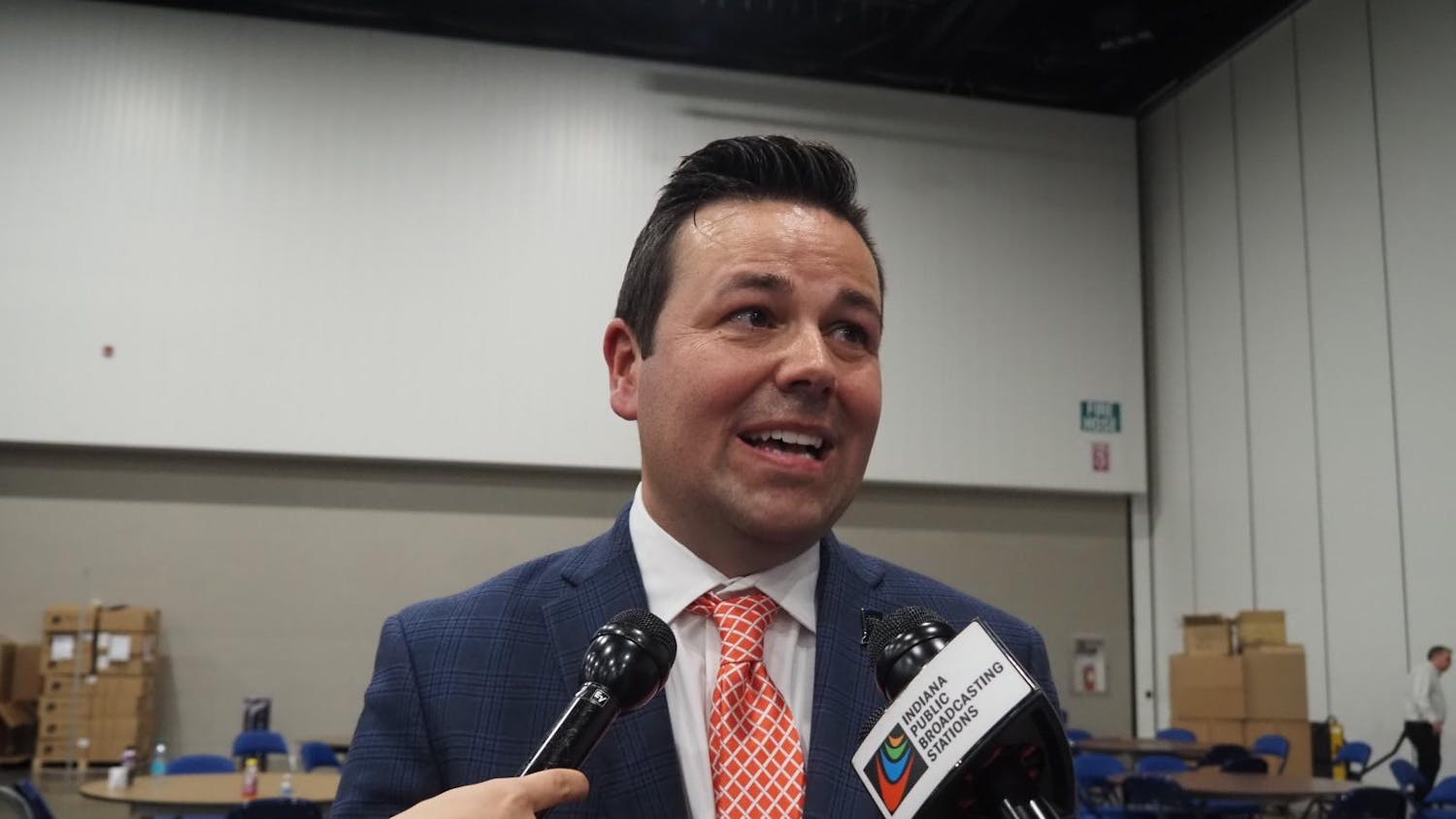The scent of freshly cut wood mingled with the aroma of white paint at 903 East Miller Drive. Early on a Saturday morning. The constant pounding of hammers and the chatter of volunteers filled the air as work got under way. \nWorking quietly together and speaking in Spanish, one couple stood apart. Enrique and Nancy Cruz, originally from Mexico, are the first Spanish-speaking couple to be partner families with Habitat for Humanity of Monroe County. \nHabitat is a nonprofit, international organization that builds houses for low-income families. The mission of the Monroe County branch of Habitat -- according to its Web site at www.bloomington.in.us/~habitat/ -- is "to witness to God's love in Jesus Christ by building simple, decent homes with people in need, using the economics of Jesus: no interest, no profit."\nCreated in 1976 by a Georgia couple with the dream of eliminating poverty housing, Habitat is celebrating its 25th anniversary this year. Since its formation, volunteers from around the world have built more than 100,000 homes in 70 nations, according to the Habitat national Web site (www.habitat.org). Locally, the Monroe County chapter of Habitat has built 40 homes in 13 years. \nTony Proudfoot, a member of the Habitat board of directors, said one of Habitat's main goals is to go from six houses this year to 20 houses by 2006. As a member of the board of directors, Proudfoot and 13 other board members, make decisions regarding financing and staffing for the group's projects. \n"We invite people of all faiths, all races, all genders to build with us," Proudfoot said. "We come together as equals...Habitat is not about giving to the poor. It's about working with people in need." \nThe Cruz family decided to apply for a Habitat house after learning of it at the First United Methodist Church in Bloomington. After getting help filling out the application in English early last July, Enrique and Nancy Cruz sent it in and hoped for the best. \nEnrique Cruz moved to Indiana five years ago to earn more money to send back to his family in Mexico. His wife, Nancy, moved here two years ago with their three children, Cindy, 6; Oscar, 4; and Diego, 20 months.\n"We can make 70 percent more money here than in Mexico," Enrique said. "This is necessary to take care of our family." \nLess than a month later, they found out they were chosen to be the Partner Families, the term for the family who receives a Habitat house, of a duplex being built on Miller Drive. \n"We were surprised," Enrique said. Nancy agreed.\nHabitat chooses partner families through an extensive application process involving four main criteria.\nAccording to the Web site, families must have been Monroe County residents for at least a year; their housing must cost more than 45 percent of their income; they must have a steady income to pay back a mortgage; and those in the family over 18 must be willing to volunteer 250 hours with Habitat. Race and ethnicity are not known when the committee decides on an applicant. \nProudfoot said that Monroe County has the highest cost of housing in the state, as it takes $15 an hour or 98 hours of work a week to afford a home. He said many people have the choice to live in decent housing and not be able to afford basic necessities, or to live in substandard housing. \nThe Cruz family can testify to this. \n"The rent is very high," Enrique said of housing in Bloomington. "Then there is nothing left for you -- all the money goes to rent. It's all money to the trash." \nHabitat charges no interest on the family's mortgages, and sells the houses for no profit, according to their Web site. The partner families pay a mortgage on the houses, which go toward overhead costs and the sponsoring of future houses. One of Habitat's main goals is to eliminate poverty housing in Monroe County.\nProudfoot explained that Habitat has two major sources of money for Habitat. Private and corporate donations cover operating expenses like staff, telephone and infrastructure. Sponsors, usually churches, then pay for the individual homes. A single family home sponsorship is about $42,000, which includes land and materials and other essentials, Proudfoot said.\n"The group that sponsors usually does a lot of volunteering -- it's like a package deal," Proudfoot said.\nHabitat itself has only four paid staff members -- the rest are volunteers.\n"It's the coolest job in the world," Milla Davydov, construction supervisor for all of the jobs, said. "I can't believe they pay me to do this." \nVolunteers are generally people from around the community, like church groups or IU student groups. The Cruz family works on the house every Saturday morning. Both Enrique and Nancy said they enjoy the work because they're learning how to do something they've never done before. The house is expected to be finished in January.\nDavydov added that the "sort of grunt work of construction work isn't rocket science," meaning anyone who wants to help can do so. Volunteers help paint siding, hammer nails for a porch, mount installation on the inside, or put up drywall -- no experience is necessary. \n"We have a lot of roles to play," Proudfoot said. "A lot of it doesn't have anything to do with hammering nails."\nHe added that one of the least known facts about Habitat is that one of their biggest needs are volunteers not on site.\n"We're a contracting agency, a land developing agency, a social service agency and a philanthropy," Proudfoot said.\nEnrique and Nancy agreed that all of the Habitat volunteers have been extremely helpful as they are still learning English. Enrique said it has been difficult at times, because generally volunteers just know words in Spanish. But, a volunteer or two who speaks Spanish usually can translate the instructions to the Cruz family. \nEnrique summed up his feelings about the workers and volunteers for Habitat in very simple words.\n"They are all good people"
Home sweet home
Habitat for Humanity provides affordable housing for local families
Get stories like this in your inbox
Subscribe





